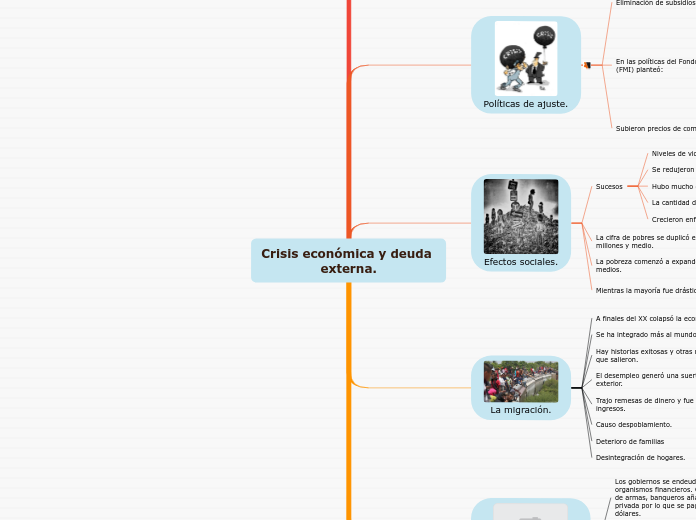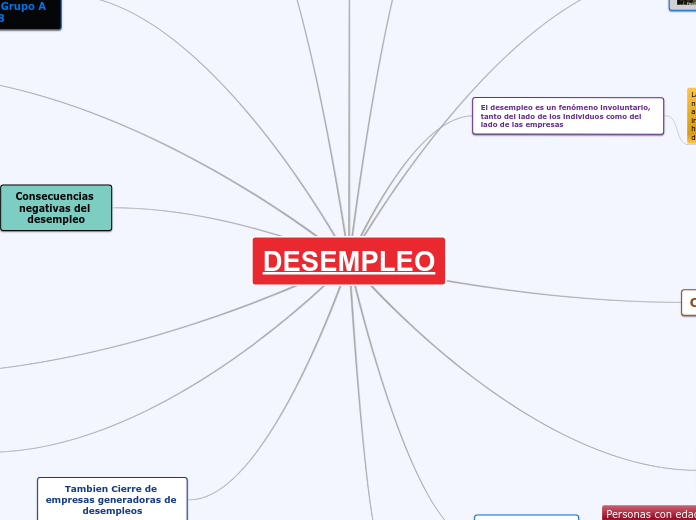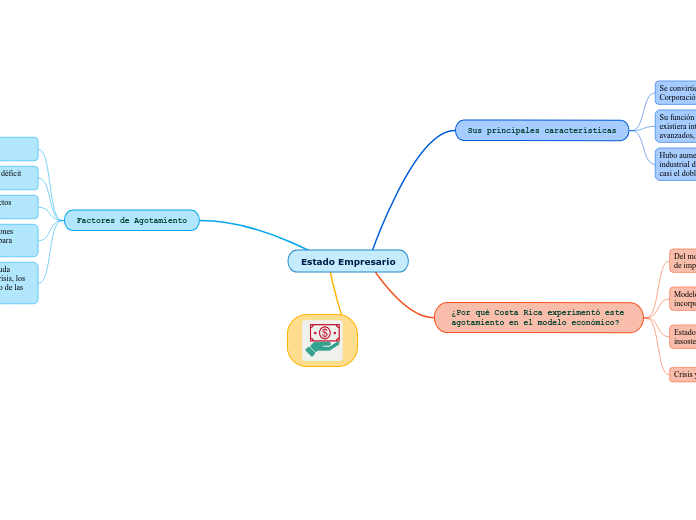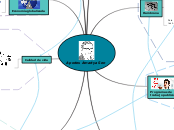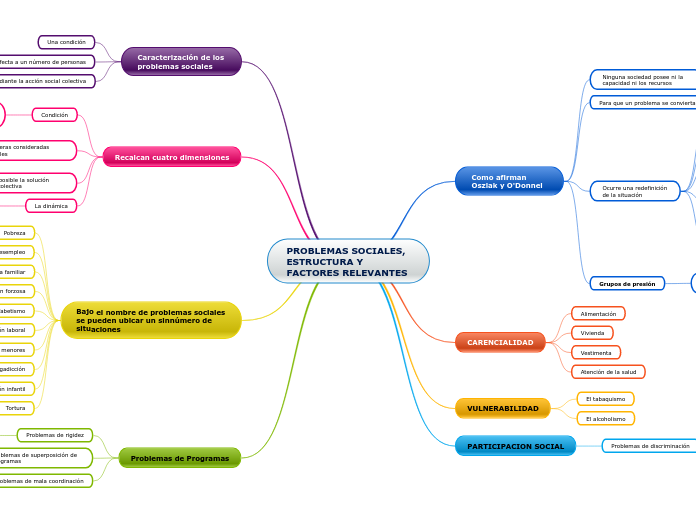Crisis económica y deuda externa.
To name your story, you have to think about the overall message and what you want your audience to understand from the story. Also, make it relevant and easy to remember.
Agotamiento del reformismo.
En los 80's el acenso del reformismo llegó a su límite y predominó la política, en medio de la crisis económica y la protesta social, se impuso un programa neoliberal.
La deuda impagable.
Subtopic
La deuda externa y las presiones no han dejado libres a los países latinoamericanos.
En América Latina durante los 80's
surgió la conciencia de que la deuda externa es impagable y que no es legítima.
Los gobiernos se endeudaron poco a poco con los organismos financieros. Con el sueldo hubo compras de armas, banqueros añadieron una deuda externa privada por lo que se pagó 17 mil millones de dólares.
La migración.
Desintegración de hogares.
Deterioro de familias
Causo despoblamiento.
Trajo remesas de dinero y fue su segunda fuente de ingresos.
El desempleo generó una suerte migración al exterior.
Hay historias exitosas y otras no tanto, de migrantes que salieron.
Se ha integrado más al mundo.
A finales del XX colapsó la economía.
Efectos sociales.
The ending of a story is essential. We all know that if the ending is weak, what happened before loses its importance. So make it unpredictable, but fair. A resolved ending answers all the questions and ties up any loose threads from the plot.
Mientras la mayoría fue drásticamente afectada.
Se consolidaron grupos monopólicos poderosos articulados de la banca y el comercio.
La pobreza comenzó a expanderse hasta los sectores medios.
La cifra de pobres se duplicó en 1999 a cuatro millones y medio.
This is the closure section of the story.
See examples of possible outcomes below:
- all problems have been solved
- it's clear how each one of your characters ends up
- your main character is transformed by the challenge
Sucesos
This is the moment when the main character surpasses the last obstacle and finally faces their greatest challenge.
The climax usually follows one of these patterns:
- realization
- resolution
- choice
Type in your answer.
Crecieron enfermedades casi extintas.
La cantidad de pobres subió.
Hubo mucho desempleo.
Se redujeron remuderaciones.
Niveles de vida bajaron.
Políticas de ajuste.
The middle of the story is where you add layers of complications that will lead to the end. Reveal more about the character's journey. Did their personality go through changes? How did they overcome the challenges? And as you build up the story’s central conflict, make it more personal to that character. Also, from the middle act, you have to lead into the final act.
Subieron precios de combustible.
En las políticas del Fondo Monetario Internacional (FMI) planteó:
There wouldn't be any tension and excitement in your story if there weren't any obstacles in your character's way.
Eliminación del control del Estado para dejar la capital privada.
Ventajas para los exportadores.
Liberación de exportaciones.
Despidos.
Eliminación de protección industrial.
Privatización de empresas.
Eliminación de subsidios.
Your character(s) need(s) motivation in order to solve the challenge(s).
La recesión económica.
In the beginning of the story (or the exposition), you will need to introduce the setting and characters. You might also want to introduce the main conflict. This part of the story is important because it gives the reader necessary background information and maybe even a first insight into a character’s personality.
Con la baja de ingresos fiscales y la elevación del gasto público, los recursos para inversión se redujeron.
Los exportaciones bajaron e incrementaron las tradicionales.
Café
Cacao
Banano
Los ochenta fueron años de caída y baja economía. Hasta que en 1983 salió una tasa negativa de el menos de el 2%.
Characters are essential to a good story. Usually, the protagonist(s) is/are the most affected by the plot. Introduce a character by focusing on their actions, interests, and occupation, as the physical appearance doesn't make a difference in most cases.
